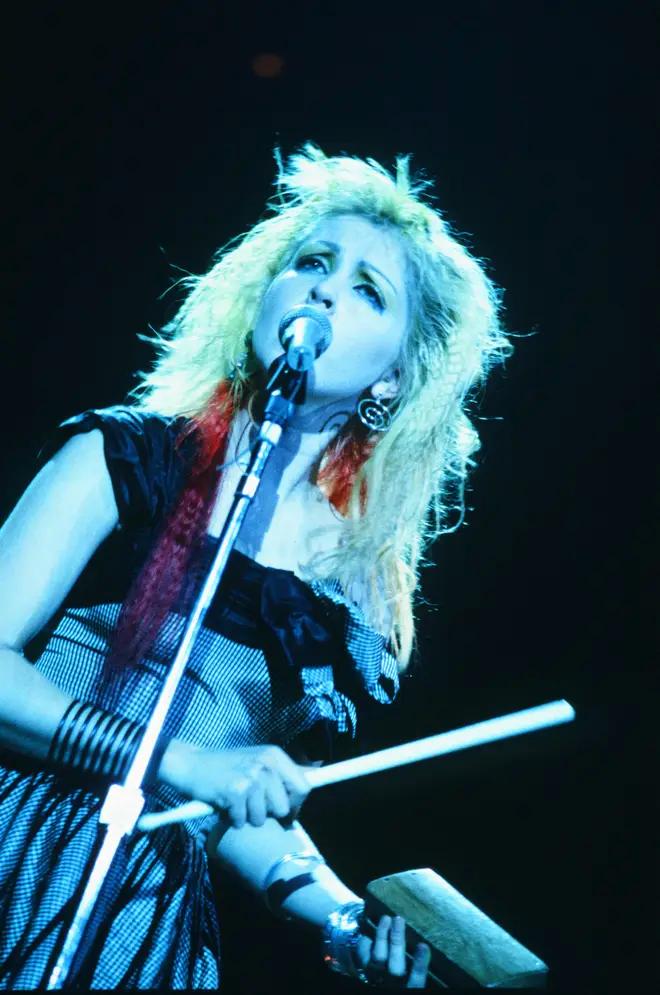Have you ever felt like you couldn’t be yourself, like you had to hide your true colors from the world? Cyndi Lauper’s iconic anthem, “True Colors,” speaks to that universal longing for acceptance and self-expression. Released in 1986, the song has transcended generations, becoming a powerful symbol of hope and resilience, particularly for the LGBTQ community. But what is it about “True Colors” that resonates so deeply with listeners? Let’s delve into the story behind this timeless masterpiece.
Unmasking the Writers: A Song Born from Empathy
While Cyndi Lauper’s powerful vocals brought “True Colors” to life, the song itself was penned by the renowned songwriting duo, Billy Steinberg and Tom Kelly. This dynamic pair had already made their mark on the music industry with chart-topping hits like Madonna’s “Like a Virgin” and The Bangles’ “Eternal Flame.”
Steinberg and Kelly approached “True Colors” with the intention of crafting a song that celebrated authenticity and encouraged listeners to embrace their true selves, even when faced with adversity. In interviews, Steinberg has shared that the song’s inspiration stemmed from the desire to create a musical experience akin to classic gospel ballads like “Bridge Over Troubled Water” and “Let It Be”—songs that offer comfort and reassurance during times of struggle.
Cyndi Lauper’s Touch: Infusing “True Colors” with Personal Loss and Tenderness
When Cyndi Lauper first heard Steinberg and Kelly’s demo, she knew it was something special. However, the song took on an even deeper meaning for her as she prepared to record it. Lauper had recently lost a close friend, Gregory Natal, to AIDS, a disease that was then shrouded in fear and stigma.
Channeling her grief into her performance, Lauper approached “True Colors” with remarkable vulnerability. In a 1986 interview with 60 Minutes, Lauper revealed that she envisioned the song as a gentle whisper, “almost childlike,” reaching out to “the softest, most gentle part of a human being.” It was this raw, heartfelt delivery that transformed “True Colors” from a well-crafted pop song into a deeply personal and moving ballad.

Cyndi Lauper’s emotional connection to the song resonated with millions.
A Beacon of Hope: “True Colors” and the LGBTQ Community
Released at the height of the AIDS epidemic, “True Colors” quickly became an anthem for the LGBTQ community, who found solace and strength in its message of self-acceptance and unwavering love. The song’s title, with its subtle reference to the rainbow flag, further solidified its status as a symbol of LGBTQ pride.
Cyndi Lauper, a longtime advocate for LGBTQ rights, embraced the song’s impact, using her platform to raise awareness and fight for equality. In 2008, she founded the True Colors Fund (now known as True Colors United), an organization dedicated to supporting homeless LGBTQ youth.
Lauper’s commitment to the LGBTQ community extended beyond her advocacy work. In 2022, she delivered a moving performance of “True Colors” at the White House in celebration of the Respect for Marriage Act, a landmark piece of legislation that provided federal recognition for same-sex and interracial marriages.

Cyndi Lauper performing at a Human Rights Campaign gala in 2010.
A Chart-Topping Triumph and Enduring Legacy
“True Colors” wasn’t just a critical success; it was a commercial triumph as well. The song soared to the top of the Billboard Hot 100 chart, becoming Lauper’s second number-one single. It also earned her a Grammy nomination for Best Female Pop Vocal Performance, cementing its place as one of her signature songs.
Over the years, “True Colors” has been covered by a diverse range of artists, from Phil Collins to Eva Cassidy, a testament to its enduring appeal and timeless message. Each interpretation offers a unique perspective on the song’s core themes, demonstrating its ability to transcend musical genres and connect with listeners from all walks of life.
More Than Just a Song: “True Colors” as a Call to Action
“True Colors” is more than just a song; it’s a powerful reminder that we are all deserving of love and acceptance, regardless of our differences. It’s a call to embrace our authentic selves and celebrate the diversity that makes the world a more vibrant and beautiful place.
As we navigate an increasingly complex world, “True Colors” continues to serve as a beacon of hope, reminding us that even in the darkest of times, our inner light has the power to shine through.


